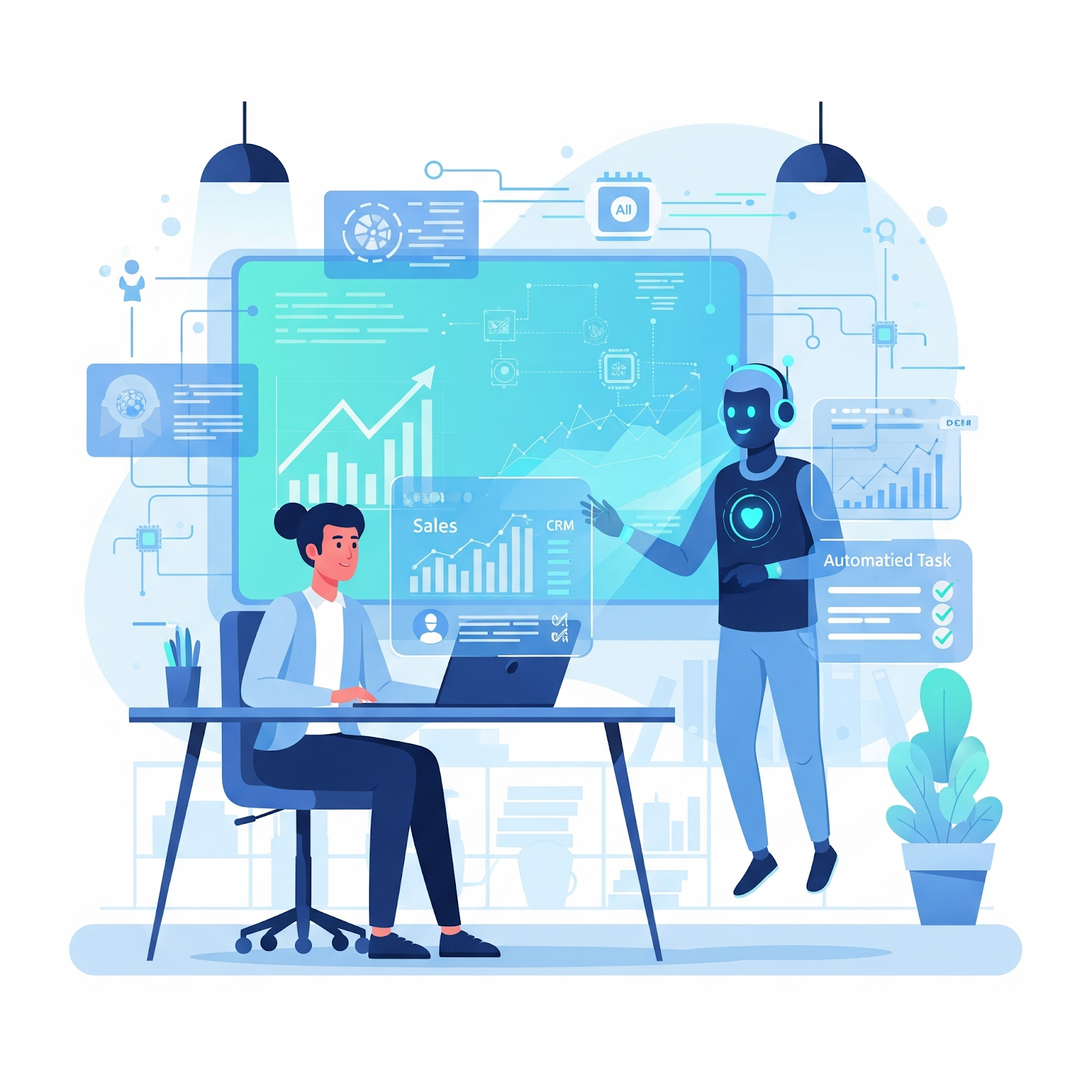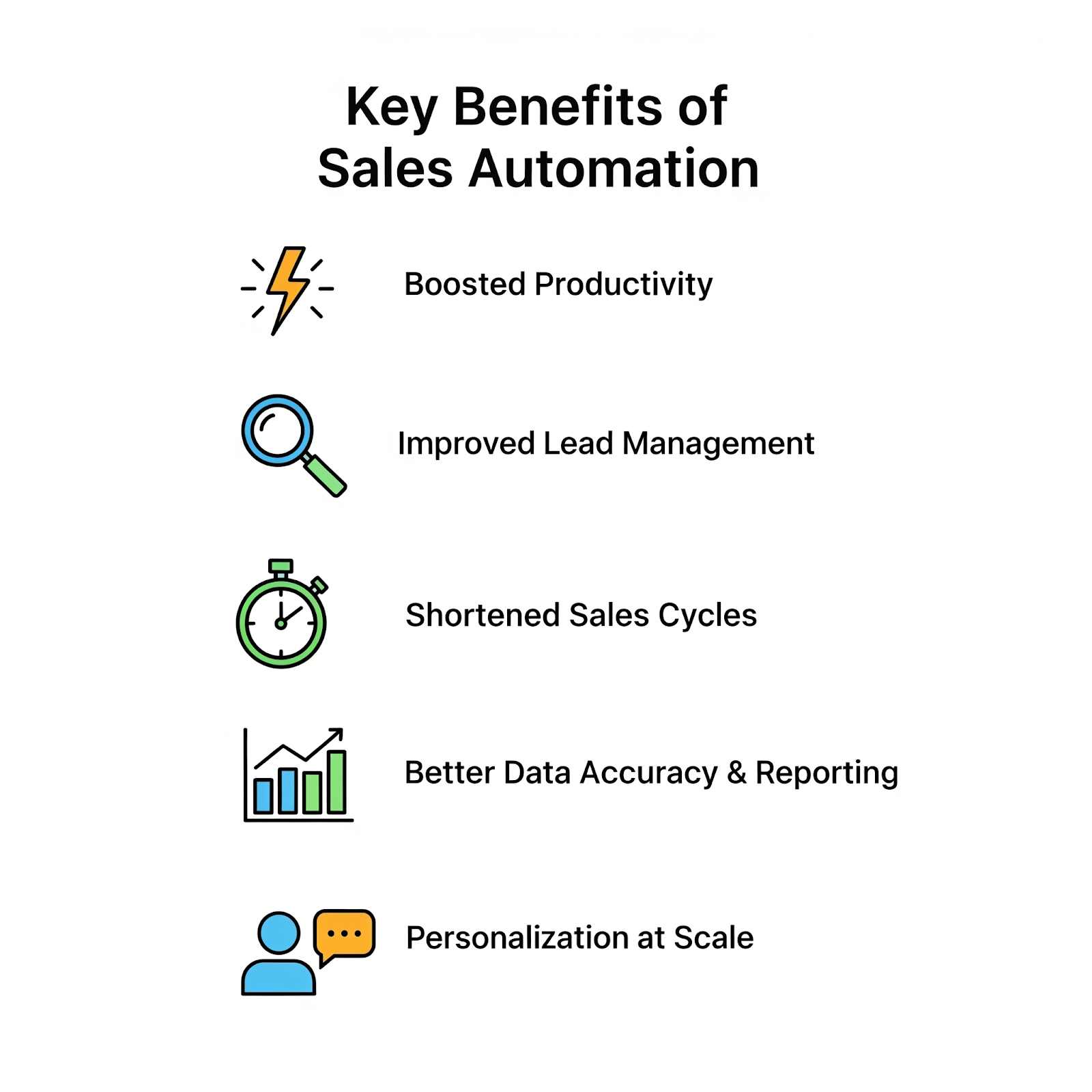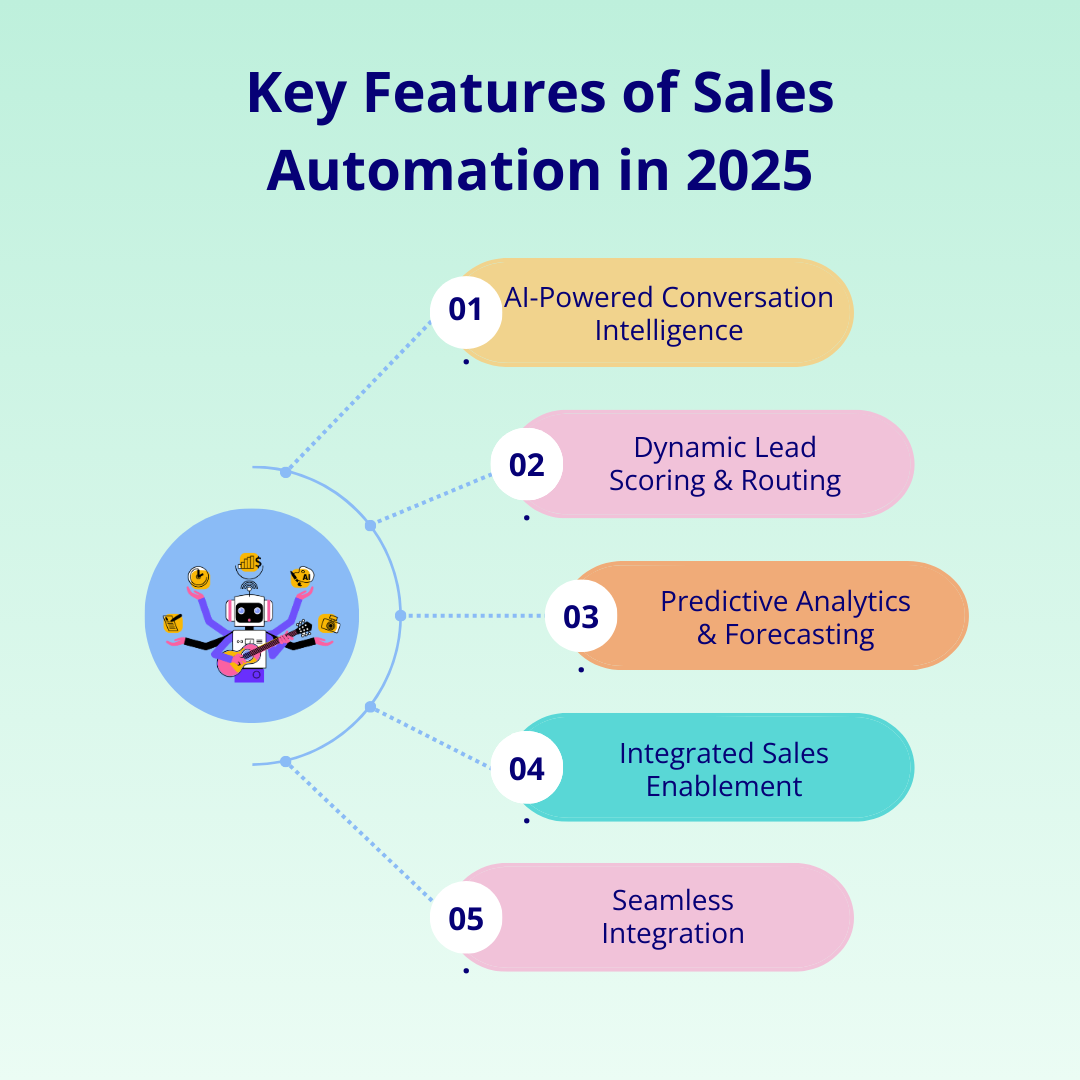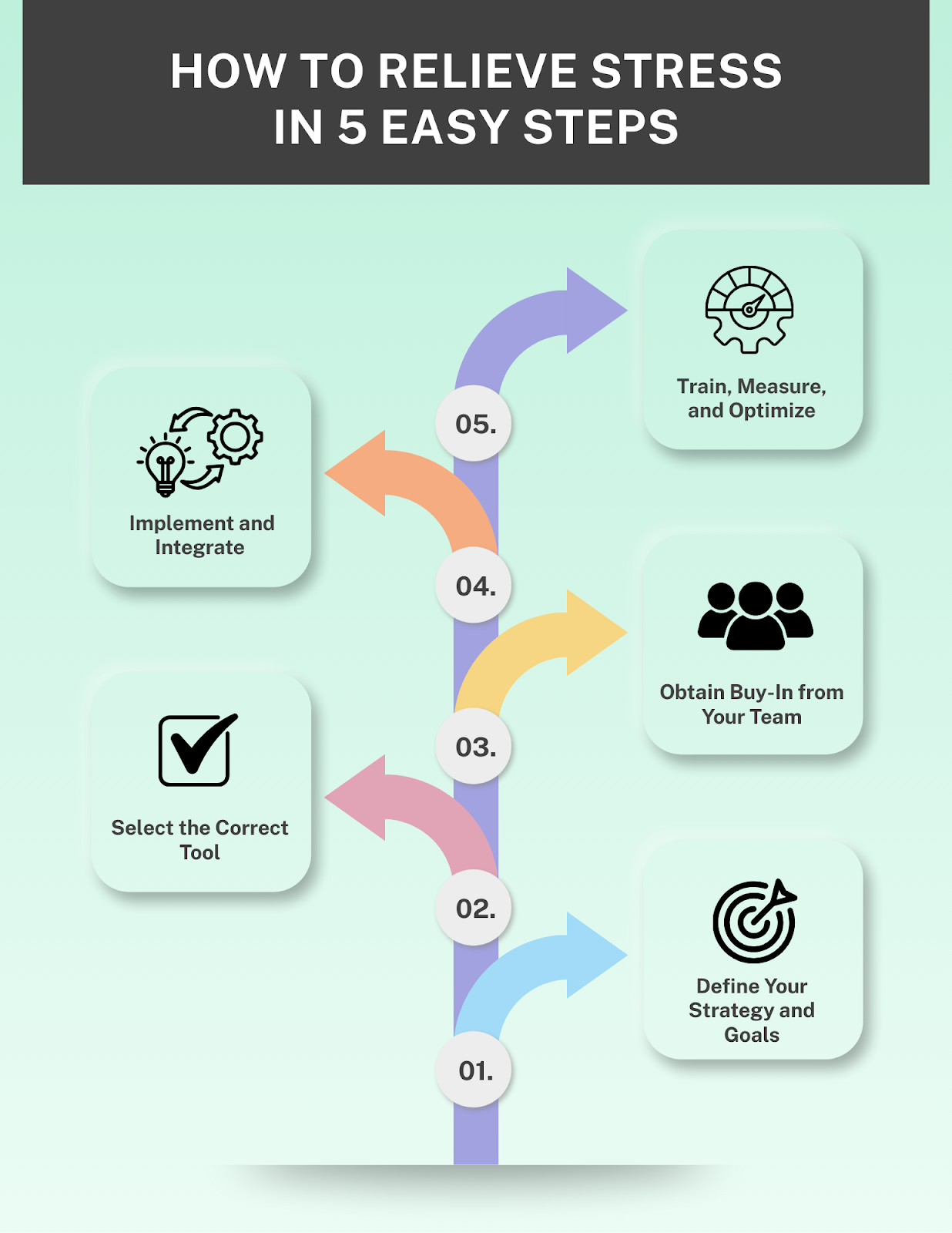
Remember the days of manually entering data into spreadsheets, sending generic emails one by one, and chasing down prospects with a phone book and a prayer? Thankfully, those days are long behind us. In the fast-paced world of B2B sales, efficiency is the new currency. This is where sales automation software comes in.
It's the digital backbone that enables modern sales teams to do more, faster, and smarter.
But cut to 2025, and sales automation is no longer just about cutting administrative time. It's an entirely new paradigm, powered by clever analytics and AI, that's revolutionizing the way we interact with customers and sell. The worldwide sales force automation software market is proof of this, with an estimated total value of $12.85 billion in 2025 and projected to hit $19.82 billion by 2029. [Source: Research and Markets]
Along the way, we'll take you through all that there is to know about sales automation platforms, from what they are and why they are so important to the most critical features that you should be searching for in the market of 2025.
What is Sales Automation? A Definition for the Modern Age
Sales Automation is a computer program employed to mechanize repetitive, mundane processes throughout the sales process. Its purpose is to allow salespeople to spend their time where they excel: creating relationships, having smart conversations, and securing deals.
Imagine it as the "digital assistant" taking care of the grunt work. Traditional automation platforms have been dominating tasks such as;
- Lead Capture & Nurturing: Capturing new leads from your website or campaigns automatically and signing them up for follow-up email sequences.
- Meeting Scheduling: Using software to avoid back-and-forth meeting scheduling.
- Data Entry: Automatically logging calls, emails, and other activity to your CRM.
- Task Management: Creating reminders and alerts for follow-ups and next actions.
But as of 2025, the sales process is being automated. The introduction of sophisticated AI has catapulted us far beyond such simple "if-then" logic to a smarter, more anticipatory form of automation that guides in real-time and predicts the next step.
Why Sales Automation is No Longer Optional for B2B Teams

For B2B sales teams, where competition is stiff and sales cycles are long, the benefits of sales automation cannot be argued away.
- Boost in Productivity: Outsourcing administrative tasks enables the sales reps to reclaim much of their day. Research by a number of different sources repeatedly demonstrates that on average, the sales rep only spends 28% of their day actually selling. The remainder of the time is spent on administrative tasks, research, and getting together with other reps, work that is easily automatable.
- Improved Lead Management: Automation does not leave room for a lead to fall between the cracks. It allows for lead scoring, routing, and follow-up in a timely manner, ensuring your team works non-stop on the best leads.
- Shortened Sales Cycles: Lead-nurturing and follow-up automation keep the sales process flowing, avoiding delays and shortening the way to a closed sale.
Explore our blog to learn how to shorten and optimize the sales cycle. - Better Data Accuracy & Reporting: Automated data entry eliminates the likelihood of human error. This results in cleaner CRM data, better sales forecasts, and greater insight into pipeline health. Successful sales organizations are 2x more likely than underperforming organizations to characterize their sales processes as automated.
- Personalization at Scale: Contemporary sales automation software can leverage data to personalize interaction at scale so that each touch is conceived as one-of-a-kind and pertinent without the intervention of human beings. As per one McKinsey report, businesses that implement sophisticated personalization techniques register an average sales increase of 20%. [Source: McKinsey]
Key Features to Look for in Sales Automation Solutions in 2025

When you're browsing various sales automation tools, it's worth thinking about what comes next. The top solutions in 2025 use artificial intelligence to give you a massive competitive edge.
- AI-Powered Conversation Intelligence: The potential of sales automation. Look for solutions that can listen to real-time sales calls, provide real-time feedback to reps (e.g., question prompts or objection mitigation), and automatically bookmark key takeaways. By 2025, 30% of outbound marketing messages will be generated with AI, a staggering 98% increase from 2022, as stated in a Gartner report. [Source: Gartner]
- Dynamic Lead Scoring & Routing: Get past simple lead scoring. The best platforms use AI to learn about a prospect's actions, company data, and intent signals in order to provide a dynamic score and route them to the right rep at the right moment.
- Predictive Analytics & Forecasting: This capability revolutionizes sales management. AI-enabled apps are able to examine past performance and present deal activity and give extremely accurate sales projections, and identify perilous deals before they fall through. Read more on our blog.
- Integrated Sales Enablement: The best solutions do not just automate things; they also enable your reps to sell more effectively. Look for platforms that provide the right sales content or demo based on the stage of the deal and the prospect's needs.
- Seamless Integration: Your sales automation tool must be a single solution that integrates smoothly with your current CRM, calendar, and email tools. It makes sure that there is a smooth workflow and one source of truth for data.
Learn more about different integration strategies here.
A Step-by-Step Guide to Implementing Sales Automation Software

The choice to implement a new sales automation platform is not one to be taken lightly. To make a successful change and earn your return on investment, use this tried-and-true, step-by-step approach.
Step 1: Define Your Strategy and Goals
You need to know exactly what you are seeking before you even consider software. What are your greatest pain points? Are they a long sales cycle, poor lead qualification, or poor pipeline visibility? Knowing your goals assists you in figuring out which features are most vital to making your team successful. It's also when you must lay out your current sales process and locate the precise, repeatable tasks that are taking up most of the time.
Step 2: Select the Correct Tool (and Partner)
The market for sales automation is saturated. To select an appropriate platform, narrow down potential solutions according to the most important features mentioned above. Select a supplier who not only possesses a strong tool but also has an easy-to-follow implementation strategy, good customer service, and scalability to match your team's growth. A trial or demo is not discretionary - put it to the test by trying how the tool integrates into your team's day-to-day process.
Step 3: Obtain Buy-In from Your Team
A successful new tool alone is one that your team embraces. Obtain buy-in from your managers and sales reps in advance. Make them aware of the benefits ahead of time: this tool isn't to replace them, but relieve them of administrative grind so they can focus on selling. Use "power users" or champions within your team to assist with adoption and provide feedback.
Step 4: Implement and Integrate
Begin with the fundamental functionality first, i.e., CRM integration and auto-logging, and ensure the data is clean and well-migrated. Phased deployment beginning with a single team or a certain subset of the sales process can allow you to work out any kinks prior to mass deployment. Seamless integration with your current tech stack is the secret to seamless workflow and preventing data silos.
Step 5: Train, Measure, and Optimize
Give all of your salespeople thorough, hands-on training. Not only demonstrate to them how the tool works, but why it will simplify their lives and improve their performance. Lastly, a sales automation platform is not a "set it and forget it" tool. Monitor key metrics on a regular basis such as conversion rates, sales cycle length, and rep utilization. Utilize this data to continuously optimize your automated workflows and enhance your overall sales process.
Conclusion: The Future is an AI-Powered Co-Pilot
Sales automation used to be simply an efficiency gimmick. Today, it has transformed into a strategy imperative. The leaders of 2025 don't simply automate processes; they're augmenting human capacity. They are an intelligent co-pilot, one that drives sales reps in real time, that standardizes the sales process, and allows leaders to make data-backed decisions.
This is where something like Pepsales AI is turning it all around. Pepsales AI does for sales automation basics what the automobile did for walking. It supercharges them with the entire set of AI capabilities. It's not an email sender; it's a platform that gives you real-time conversation intelligence, qualifies deals automatically on time-tested methodologies such as MEDDIC, and assists you in forecasting to unparalleled levels of accuracy.
By selecting a solution that's more than just automation and gives you this higher level of AI-powered intelligence, you're not just investing in software; you're investing in an intellectual, more productive, and more successful sales team.
Want to get a glimpse into the future of sales automation?
Schedule a demo with Pepsales AI today and experience how our platform can be your team's best co-pilot, making every sales call a winning call.





.avif)




.avif)
.avif)
